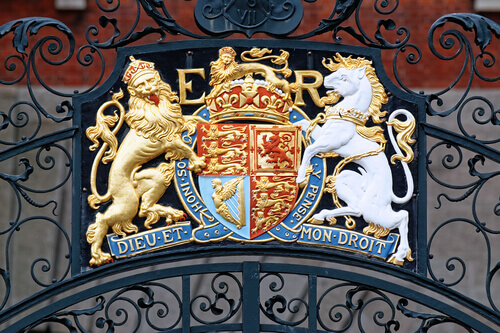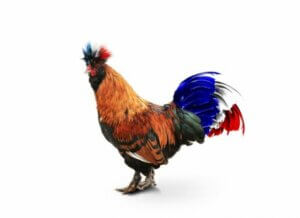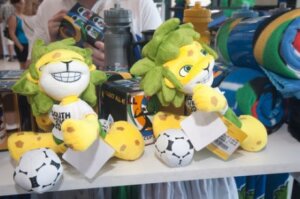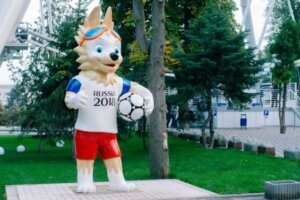5 World Cup Mascots You Should Know About

It’s one of the largest sporting events in the world, and happens every four years in different countries. Since 1966, it’s had a character representing it. We’re talking about the soccer World Cup, and World Cup mascots can be animals, people, foods or futuristic creatures. We’ll tell you all about them in this article.
World Cup mascots
At the 1966 World Cup in England, they began the tradition of having a mascot. This character represents the organizing country, whether in terms of culture, food or biodiversity. Here, we’ll show you some of the most famous ones:
1. Lion (World Cup Willie)
We couldn’t start this list without talking about the one that did it first. You could see the lion, called “Willie”, throughout the 1966 World Cup in England. He also wore a shirt to represent the UK: white with red stripes.
World Cup Willie was also the name of the official championship anthem, which Lonnie Donegan performed. The lion is one of the animals that represents this country best. In fact, it’s been on the shield- the image on the cover of this article- since the 12th century, and is used in the emblem of the Premier League, the English soccer league.
The lion was used again in the 2006 World Cup in Germany under the name Goleo VI. He wore a white shirt with the year the cup was held.
2. Rooster (Footix)
For the 1998 World Cup in France, the mascot was, of course, a rooster. This animal is a national symbol, and you can also see it in rugby and the soccer leagues. The Footix design emerged after a competition between various creative agencies. The winner was Fabrice Pialot’s design.

It was a cartoon whose name was a combination of football and Vercingetorix, a legendary hero of the country. Its body was blue, the chest was red and the bill was yellow. It holds a ball with one leg and its chest reads “France ’98.”
3. African leopard (Zakumi)
For the 2010 World Cup in South Africa, they used this animal to represents the country. Its name is a mixture of the words “za” (the ISO code of the country) and “kumi” which means “10” in several of the native languages.

It had a yellow body with black spots, green hair and pants, and a white shirt. It also held a ball in one of its hands. The African leopard is cunning, daring and spontaneous, and those were the characteristics of one of the most memorable World Cup mascots.
4. Armadillo (Fuleco)
For the World Cup 2014 in Brazil, the chosen animal was the armadillo. This mammal got its name from the words for “football” and “ecology”. One of the topics of this World Cup, and of the Olympics held in Rio de Janeiro two years later, was caring for the planet. Also, it specifically focuses on the biodiversity of one of the world’s largest countries, Brazil.

As for Fuleco, it belongs to the species Tolypeutes tricinctus (three-banded armadillo), and it was a friendly, sociable and kind character. Additionally, it loved the environment, fair play and fun. It had the colors of the Brazilian flag: yellow, green and blue.
5. Wolf (Zabivaka)
For the 2018 World Cup in Russia, the chosen mascot was a wolf, a typical animal to represent the country. His name meant “little scorer”. It was grayish in color, wore glasses and a white, red and blue shirt.

It was designed by Ekaterina Bocharova, and was chosen through an online vote. As for its personality, it was sociable, self-confident, respectful of its opponents and knew how to value its teammates. It enjoyed working in teams and had a great sense of direction. In fact, many of these are traits of the real Russian wolf.